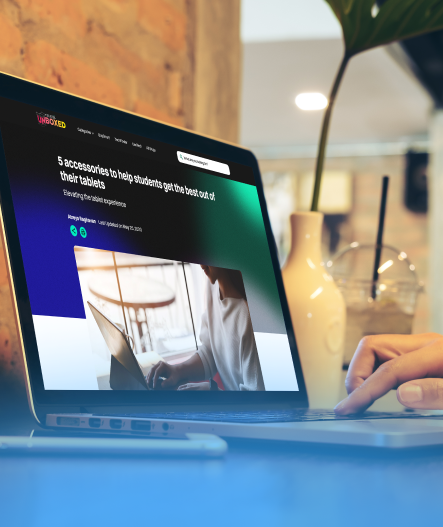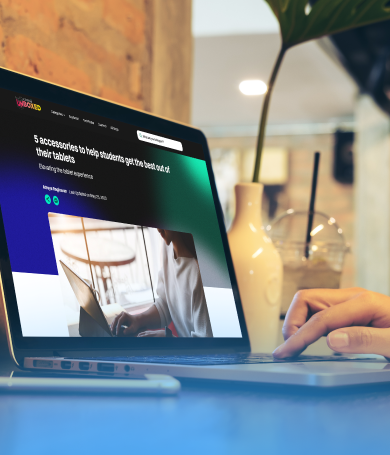Google introduced the Digital Wellbeing feature back in 2018 when it rolled out Android 9 Pie. Growing concerns about users spending excessive time on their smartphones, negatively impacting their mental health and well-being, led to the introduction of the Digital Wellbeing feature. One of the important features of Digital Wellbeing is Screen Time, which provides insights into how much time users spend on their devices.
Screen Time allows one to see which apps they use most frequently and how often they unlock their phones. Tracking these parameters allows users to spend less time on their smartphones, resulting in a more balanced and mindful approach to technology use.
Steps to view screen time on Android like a pro
Here is how you can check screentime on Android like a pro using the Digital Well-being app.
Go to Settings on your Android device, and open “Digital Wellbeing & Parental Controls.” On some phones, it may only be available as “Digital Wellbeing.”
ALSO READ: Android 15 may allow your phone’s screen to turn off when you’re not looking at it
The main screen of the app will have different sections like Screen Time, Most used apps, Screen time goals, App timers, Driving monitor, Walking monitor, and Volume monitor. Note that the Screen Time section may not explicitly be mentioned as “Screen Time” but will be depicted with a time, like 3h 1m, for example.
1. Screen Time
On Digital Wellbeing’s main screen, you can tap on the “Screen Time” or “Most Used Apps” section to access the Dashboard. Once you are inside the Dashboard, you will see three sections: Screen Time, Notifications, and Unlocks.
i. Screen Time
Within this feature, you will find a daily usage graph displaying the top three apps or categories of apps that consume your time. You can toggle the graph to view specific apps or categories, such as social, productivity and finance, news and information, and more.
There is a “View All” button available to check additional apps and categories beyond the top three. Tapping on each app or category will show information such as screen time, notifications, and app openings in graph format. There is a Weekly/Daily toggle for seeing screen time usage in more detail. Lastly, there is a search bar for screen time usage of a particular app or category.
ii. Notifications
The Notifications section displays notifications received from app categories like social, productivity and finance, news and information, and so on. It offers a search bar to see the number of notifications received by a particular app.
iii. Unlocks
The Unlocks section will let you see the number of times you unlocked the phone on each day of the week in a graph format.
2. Screen time goal
The screen time goal feature allows you to set a time limit for your current screen usage. Once you set the screen time goal, a circular graph appears, displaying information such as Used (screen time used), Remaining, and Over Goal. On the same screen, there is a calendar to see how you performed on the screen time goal and compare it to other days.
3. App timers
App timers can be used to set usage times for either app categories like Audio, Games, Shopping and Food, Social, and so on, or individual apps. You can set the usage time for a specific category or app to span selected days or the entire week.
ALSO READ: How Screen Distance on iOS 17 will take care of your eyes
4. Monitoring features
Digital Wellbeing has features like Drive Monitoring and Walk Monitoring to see screen time while driving and walking. In addition, there is a Volume Monitor feature intended for headphones for monitoring loud listening time. These features provide data in graph format with Daily/Weekly toggles.
ALSO READ Android 15 gets its first developer preview: Here’s what’s new
5. Parental controls
The Parental Controls feature within the Digital Wellbeing app allows users to supervise the phone remotely with the Family Link app for parents. This feature enables parents to monitor their children’s screen time and establish appropriate limits. You can also use it to impose restrictions on Google services, like app approvals or content filters on Google Play.
Action Dash, StayFree, and YourHour available on the Google Play Store are some of the alternatives to Google’s Digital Wellbeing app. If you generally spend less time on your phone, you may not need to use an app that monitors your screen time. However, even brief periods of self-reflection on your phone usage can be beneficial. Whether through an app or simply observing your habits, staying mindful of your relationship with your device is key to healthy technology use.
Unleash your inner geek with Croma Unboxed
Subscribe now to stay ahead with the latest articles and updates
You are almost there
Enter your details to subscribe

Happiness unboxed!
Thank you for subscribing to our blog.
Disclaimer: This post as well as the layout and design on this website are protected under Indian intellectual property laws, including the Copyright Act, 1957 and the Trade Marks Act, 1999 and is the property of Infiniti Retail Limited (Croma). Using, copying (in full or in part), adapting or altering this post or any other material from Croma’s website is expressly prohibited without prior written permission from Croma. For permission to use the content on the Croma’s website, please connect on contactunboxed@croma.com
- Related articles
- Popular articles

















Anvinraj Valiyathara
Comments